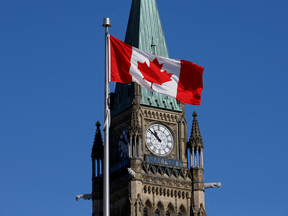OTTAWA — The federal minimum wage is rising to $16.65 per hour on April 1, up from $15.55
Federal Minimum Wage Rising to $16.65 per hour on April 1
The federal government has announced an increase in the minimum wage to $16.65 per hour, effective April 1. This adjustment reflects the cost of living adjustments and is part of the government’s commitment to improving wages for low-income workers.
Key Details:
- The previous rate was $15.55 per hour.
- The increase will apply to all Canadian workers, including those in fast food, retail, and other essential industries.
- This adjustment aligns with the government’s strategy of addressing wage stagnation across the economy.
Application Across Sectors
The federal minimum wage applies to various sectors, including:
- Food Service Workers: The new rate will increase their hourly pay, ensuring better living conditions for restaurant employees and those in similar roles.
- Retail and Hospitality: Employees in these industries will receive a higher wage, contributing to improved quality of life and job satisfaction.
- Essential Services: Workers providing healthcare, transportation, and public services will also benefit from the updated minimum wage.
How the Increase is Calculated
The government bases its wage adjustments on the Consumer Price Index (CPI), which measures the cost of living over time. The CPI rose by 6.8% in 2022, leading to this significant increase.
Impact of CPI:
- The CPI increase ensures that wages keep up with inflation.
- This is a fair approach to addressing wage stagnation for hardworking Canadian workers.
Job Cuts and the Economy
Despite the wage increase, some businesses may experience job cuts in response to cost-of-living adjustments. Companies like Amazon have been among those facing significant reductions in workforce due to these changes.
Example: Amazon
- The company has announced plans for substantial layoffs, affecting millions of workers.
- This highlights the tension between wage increases and business profitability in managing costs.
labor law updates
canadian labor laws continue to evolve, with ongoing updates to regulations surrounding workplace practices. For instance, updates to Ontario’s labor laws aim to enhance protections for workers, particularly those affected by automation and changing job markets.
Recent Developments:
- Strengthening workplace safety standards.
- Enhancing ergonomics in the workplace.
- Expanding paid leave benefits for employees facing challenges due to technological advancements.
economy
The federal minimum wage adjustment is part of broader economic considerations. The government’s approach reflects its commitment to addressing disparities in income levels and ensuring equitable opportunities across different sectors.
Economic Implications:
- This wage increase supports workers’ financial stability, enabling them to contribute more effectively to their families and communities.
- It also serves as a foundation for long-term economic growth by fostering a skilled workforce.
Conclusion
The federal minimum wage adjustment is a significant step in addressing income inequality. By aligning with the CPI, the government ensures that wage increases are both fair and sustainable. While businesses may respond with strategic adjustments, including potential job cuts, the focus remains on improving living standards for workers across Canada.
Advertisement
advertisement
As we continue to grow, we want to ensure our partnerships remain strong. For more information about our services or products, please visit our website or contact us directly. We are committed to providing high-quality solutions that meet your needs and exceed your expectations.
This concludes the article on the federal minimum wage increase. Thank you for reading!




